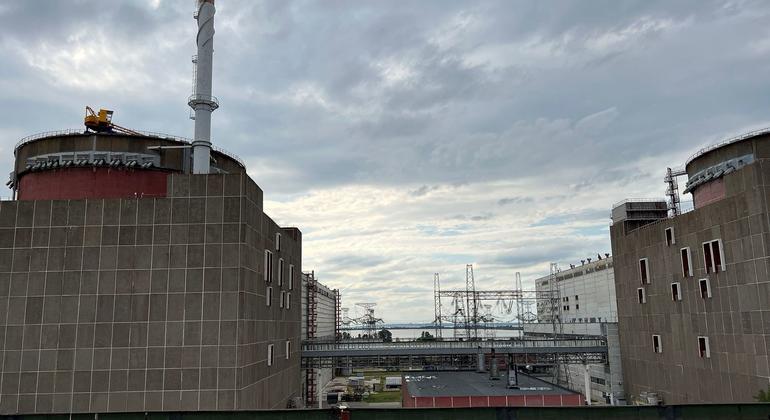Ukraine: Safety at Zaporizhzhya nuclear power plant deteriorates after nearby drone explosion


Located in southern Ukraine, Zaporizhzhya is Europe’s largest nuclear power plant and fell under Russian control shortly after a full-scale invasion broke out in February 2022.
ONE International Atomic Energy Agency (IAEA) The team there was informed that an explosive carried by a drone had detonated just outside the protected area of the plant.
Call for restraint
The incident site is located near essential cooling water spray ponds and about 100 meters from the Dniprovska power line, the only remaining 750 kilovolt (kV) line supplying power to the plant.
The IAEA team immediately arrived at the scene and reported that the damage appeared to have been caused by a drone equipped with explosives.
Although there were no reports of casualties or impact to equipment, the road between the two main gates of the nuclear power plant was affected.
“Once again we see an increase in nuclear safety and security risks facing the Zaporizhzhya Nuclear Power Plant,” speak IAEA Director General Rafael Mariano Grossi.
“I remain extremely concerned and reiterate my call for maximum restraint from all sides and strict adherence to five specific principles was established to protect crops.”
The guidelines, drawn up in May 2023, state that no attacks on the plant are allowed and that the plant cannot be used as a storage or base for heavy weapons.
Furthermore, off-site power sources should not be threatened; all essential structures, systems and components should be protected from attack or sabotage, and no action should be taken that undermines the principles.
Strong military activity
The IAEA team said military activity in the area, including very close to the plant, had been intense over the past week. Experts reported hearing frequent explosions, heavy machine gun and rifle fire, and artillery fire at various distances.
On August 10, the Zaporizhzhya plant administration informed the group that artillery had struck the local electricity and water substation in the nearby city of Enerhodar, where most of the employees lived.
The attack damaged two transformers, resulting in a citywide power outage. Water had to be supplied by diesel generators. Power was restored the following day.
The IAEA also reported that a major fire in one of the nuclear power plant’s cooling towers earlier this week caused significant damage, although there was no immediate threat to nuclear safety.
A ‘fragile situation’
The UN agency is also present at the Khmelnytskyy, Rivne and Southern Ukraine nuclear power plants, as well as the Chornobyl site. The groups have reported frequent air raid alerts and drone attacks this week.
“Nuclear power plants are designed to be resilient to technical or human-caused failures and external events including extreme events, but they are not built to withstand a direct military attack and they are not expected to be, like any other energy facility in the world,” Mr Grossi said.
“This latest attack highlights the vulnerability of such facilities in conflict zones and the need to continue monitoring this fragile situation.”
Developments in Russia
The attack came as Ukrainian forces continued their offensive in Russia’s Kursk region earlier this month.
International Atomic Energy Agency (IAEA) recently said that they were monitoring reported military activities taking place near the Kursk Nuclear Power Plant.
This week, Mr. Grossi also continued to discuss recent events in Russia, “including military activity near a major operating nuclear power plant.”
He also expressed his willingness to assess the situation, including visiting the factory.


